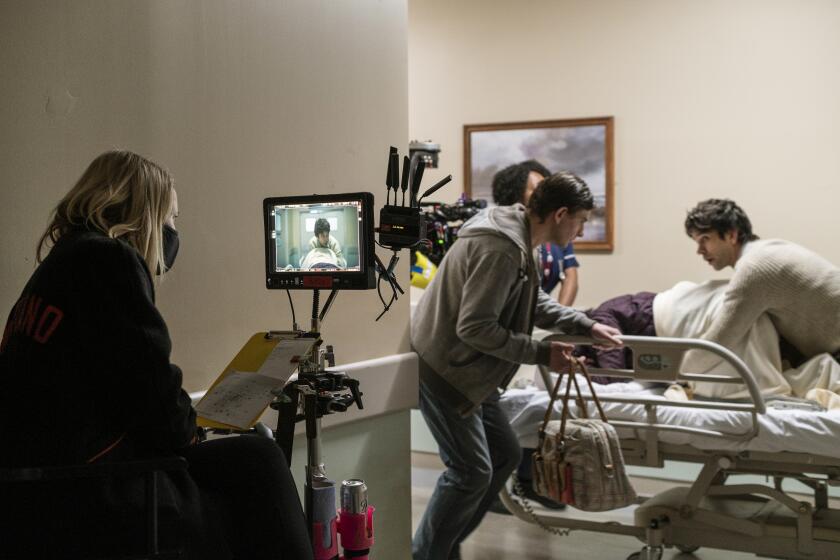Customized Call-in News?
Question: What innovative new information medium do you get when you cross the technological expertise of Pacific Bell with the editorial excellence of Wall Street Journal publisher Dow Jones & Co.?
Answer: Pay radio.
No kidding. Don’t touch that dial--just tap that key pad. You’ll get all the news that’s fit to hear.
Pac Bell’s first foray into the information services market is the Daily Reporter--a call-in headline news voice mail system. For a few dollars a month, subscribers in Southern California can call and retrieve what are essentially recordings of radio news broadcasts provided by Dow Jones. You can choose from an audio news wire of international, financial and sports news.
Pac Bell’s Daily Reporter marks the formal commercial entry of the Baby Bells into an information marketplace from which they were once legally barred. Now that the courts have ruled that the seven regional Bell operating companies should be allowed to offer data directly over their own phone lines, technology futurists predict that these telecommunications giants will come to dominate the on-line information services market.
Newspaper publishers fear that the Baby Bells’ move into voice databases will gobble up their own display and classified ad revenue. (Consequently, Dow Jones decided to sleep with the enemy.) Other media companies worry that the Bell companies will offer information services of such technical sophistication that consumers will flock to them by the millions.
But I wouldn’t make those predictions based on what Pac Bell/Dow Jones now provides.
The Daily Reporter doesn’t let you create a news “profile” or “filter” to get only those stories that might interest you. The system isn’t the least bit interactive; you can’t make choices or initiate further inquiries. All you can do is listen to the news stories as read by a gentleman with a distinguished voice--then store or erase the messages. The Daily Reporter is exactly like someone reading a newspaper clipping into your voice mail box.
Moreover, you can’t subscribe to the Daily Reporter unless you subscribe to Pac Bell’s Message Center voice mail service. No doubt you will one day get a 15-second advertisement served up along with your news flashes.
“We’ll be the first to say that this is like sticking our little toe into the water,” acknowledges Sandy Hale, a Pac Bell spokeswoman.
Let’s be serious: How many people want to pick up the phone and dial their all-news radio station?
To be fair, though, the Daily Reporter is just the first step in Pac Bell’s efforts to expand its information business. The company is pushing aggressively to evolve an information service “platform” that lets people customize their information requests.
In other words, the voice mail radio station “broadcast” becomes a personally tailored information “narrowcast.” A subscriber, for example, might craft a service that only sends news relating to certain blue chip stocks, stories on child care or the Los Angeles Dodgers.
“We are building the ability for individuals to create their own information profiles,” says Jean E. Graham, the Pacific Bell Information Services manager for business development. Indeed, by the end of this year, Graham says, subscribers will be able to select their own information profile from a Pac Bell catalogue--sort of a Sharper Image for information retrieval.
However, just what kind of premium are people willing to pay to obtain such “customized” information? How much extra would you spend to listen to an all-news pay-radio service dedicated to your interests? Fifty dollars a year? One hundred? Three hundred?
Do you really want to pay Pac Bell for an “information profile” that lets you track Microsoft’s stock price and Jose Canseco’s batting average? What is such an on-line clipping service worth? Odds are that the market for customized audio information is going to be more niche than mass.
The fact is, postwar America has grown up on a diet of subsidized information, most notably advertising-supported media. Look, for example, at the relative stagnation of growth in the pay-TV and pay-per-view business. Quite frequently, people are not prepared to pay a premium for targeted services.
The shift to customized information begs the question: Will customers be willing to pay for the costs of customization, or will they quickly realize the benefits of subsidy? In other words, would you pay an extra 25 cents for a newspaper without ads? Or an extra $5 a day for CNN Headline News without commercials?
No one should doubt that the ability to create custom information for distribution can be immensely valuable. At the same time, only the most naively optimistic infomaniacs believe that most people actually crave the ability to customize their information consumption.
PacBell and the rest of the Baby Bells should remember that the most successful and memorable ad campaign of the old Bell System wasn’t “Reach Out and Inform Someone.” It was “Reach Out and Touch Someone.”






